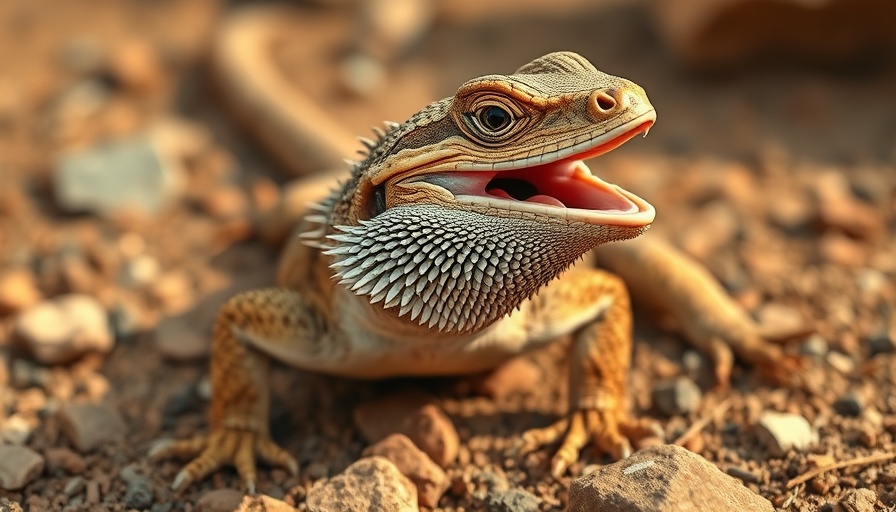
Unlocking the Secrets of Bearded Dragons' Gender Switching
The central bearded dragon (Pogona vitticeps), commonly found in central eastern Australia and renowned as a popular pet, has astounded scientists with its unique ability to switch its sex depending on its environment. Recent groundbreaking studies utilizing next-generation sequencing technology have illuminated the intricate genetic mechanisms behind this remarkable ability.
Understanding the Fusion of Genetics and Environment
Unlike many species where sex is determined solely by chromosomes, bearded dragons exemplify a rare dual system influenced by both genetic makeup and the environmental factor of nest temperature. Typically characterized by a ZZ/ZW chromosome system, males possess two similar Z chromosomes, while females carry a ZW combination. However, intriguingly, ZZ males can transition to functional females when subjected to elevated incubation temperatures.
Recent Research Breakthroughs in Genome Sequencing
The recent studies shed light on what researchers are calling the "master sex gene" of bearded dragons. With the adoption of enhanced genomic sequencing techniques from independent research teams in China and Australia, scientists have begun to pinpoint specific regions in the dragon's genome that play crucial roles in sex determination. This collaborative effort has not only validated findings but also strengthened the understanding of how external conditions can manipulate biological outcomes.
The Role of Temperature in Gender Determination
The ability of bearded dragons to adapt their gender based on temperature introduces intriguing implications for understanding the impacts of climate change on reptilian populations. As global temperatures rise, the prospect of skewed sex ratios in species with temperature-dependent sex determination may present ecological challenges. Scientists are now examining how shifts in environmental conditions could lead to long-term evolutionary impacts on these lizards.
Comparing the Bearded Dragon's Adaptations with Other Species
Similar to other reptiles like turtles and crocodiles, the bearded dragon's adaptive gender-switching capabilities raise fascinating questions regarding the evolution of sex determination mechanisms across various species. Such parallel adaptations showcase the remarkable resilience and versatility of life, prompting discussions about the evolutionary pressures that influence such traits. While the bearded dragon utilizes temperature as a determining factor, other species alongside it leverage diverse environmental cues.
Implications for Future Research and Conservation
As researchers continue to explore the genetic basis of sex determination in bearded dragons, their work underscores the importance of understanding biodiversity in changing climates. The genetic insights gleaned from these lizards could pioneer new research avenues in conservation biology and environmental studies, allowing for more informed strategies to preserve species affected by temperature fluctuations.
Technological Advancements at the Forefront
The advancements in genomic sequencing technologies, such as the CycloneSEQ nanopore sequencer, highlight the remarkable progress made in animal genomics. These pioneering techniques enable scientists to conduct extensive genetic analyses of complex organisms, paving the way for breakthroughs across diverse fields, including agritech, medicine, and biodiversity conservation.
Conclusion: What Can We Learn?
These findings about the bearded dragon's ability to switch sexes propel forward both our scientific understanding of gender determination and our awareness of the implications of our changing world. As we witness increasing temperature variations due to climate change, it’s imperative to study how other species may adapt similarly. The research offers a glimpse into the complex interplay between genetics and environment, provoking thought about how we might protect the inherent biodiversity of our planet.
Call to Action
As we dive deeper into understanding the delicate balance of ecosystems and the incredible adaptability of species like the bearded dragon, it's essential to stay informed and involved in conservation efforts. Whether it's through volunteering, advocating for policies, or simply educating ourselves and others, everyone can contribute to preserving our planet’s biodiversity.
 Add Element
Add Element  Add Row
Add Row 



Write A Comment